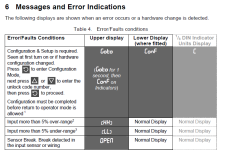Hello guys,
I'm in a bit of a dilemma - not very clear on the operation the typical PID controller. Here's the issue:
A client has a turbine whose outlet (exhaust gases) is used to power a chiller. The exhaust gases are channelled through a control valve (with a positioner) which he would like to open/close to different percentages depending on the conditions in the process.
He simply wants to observe the process physically (There is no sensor installed on the process to read/monitor PV parameter), then depending on the process conditions, he can decide to open the control valve to maybe 20% as an example, and leave the valve in that state until he has need to open/close it to a different percentage value. Basically all that needs to be done is to send the appropriate milliamp (4-20mA) signal to the valve positioner (more like using a 4-20mA signal injector to send open/close signals to the valve positioner). He does not intend to run the system in Auto.
As a solution, I'm considering using a single loop controller (UDC-1700) but not very sure if it would fit the purpose. The idea is to run the loop controller in Manual Mode, and allow the user set the Output percentage to the value he desires.
I just need to know if this will work, and would appreciate if you please provide some clarification on these (I seem to have it all jumbled in my head).
Thanks for your time!
I'm in a bit of a dilemma - not very clear on the operation the typical PID controller. Here's the issue:
A client has a turbine whose outlet (exhaust gases) is used to power a chiller. The exhaust gases are channelled through a control valve (with a positioner) which he would like to open/close to different percentages depending on the conditions in the process.
He simply wants to observe the process physically (There is no sensor installed on the process to read/monitor PV parameter), then depending on the process conditions, he can decide to open the control valve to maybe 20% as an example, and leave the valve in that state until he has need to open/close it to a different percentage value. Basically all that needs to be done is to send the appropriate milliamp (4-20mA) signal to the valve positioner (more like using a 4-20mA signal injector to send open/close signals to the valve positioner). He does not intend to run the system in Auto.
As a solution, I'm considering using a single loop controller (UDC-1700) but not very sure if it would fit the purpose. The idea is to run the loop controller in Manual Mode, and allow the user set the Output percentage to the value he desires.
I just need to know if this will work, and would appreciate if you please provide some clarification on these (I seem to have it all jumbled in my head).
- Will the fact that there is no PV input to the system - (I do not intend to have the system run in Auto) have any negative impact on achieving the above control philosophy?
- When one says "When in Manual mode you have access to change only the Output", what does that mean? Does it mean that the system ignores the PV and simply converts whatever Setpoint value is entered on the controller directly to a corresponding 4-20mA output to drive the valve (0-100%)?
Thanks for your time!







